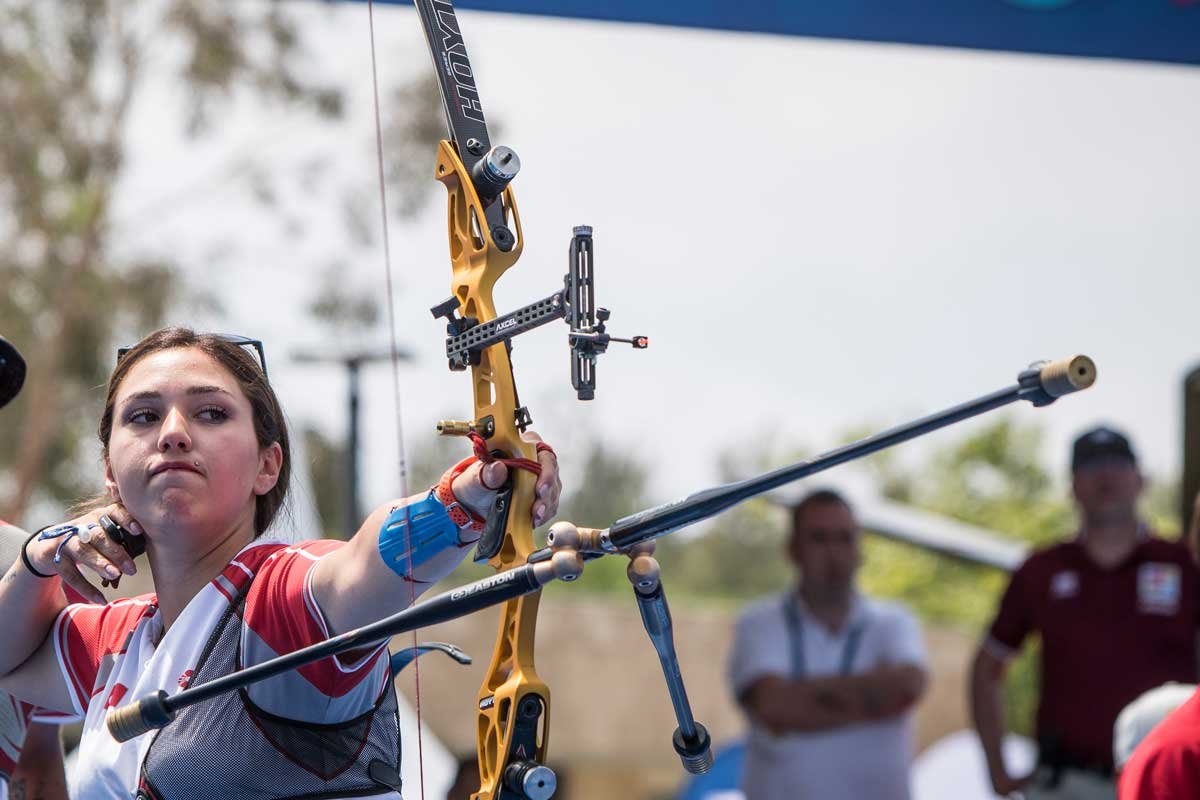Beginner archers are prone to over-complicating things when it comes to their gear, especially their bows. One particular aspect of bow selection that can induce headache for an amateur is the recurve bow draw weight. The poundage values and figures surrounding the subject can be confusing to navigate, resulting in an ill-fitting choice.
On Track and Pursue, you can learn more about such features to help ease you through the early sections of the archery roadmap. Also, the pound-recurve-bow aspect of a bow is what we’ll discuss today so that you can secure a bow that ensures steady skill progression.
Pound Recurve Bow Chart
To get your archery journey off to a good start, you must secure a bow that’s within your draw weight limit. Failing to do so won’t bode well for your venture. It will either lead to constant fatigue due to a too-heavy draw weight or unchallenging sessions that result in your skill plateauing from a super-light draw.
Starting with a good bow draw weight sets the tone for the rest of your journey. It ensures the bow fits both your body weight and build, making your draws as smooth as possible.
In the chart below, the left-hand column indicates the different archer weights from lightest to heaviest. Choose which best describes you, and then look to the right-hand column for your ideal draw weight range. Keep in mind that even if your weight falls along the heavier range, you should still select from the lighter weights if it’s your first time shooting a bow.

- 70 to 100 pounds (kids): 10 to 15 pounds
- 100 to 130 pounds (kids with bigger builds): 15 to 25 pounds
- 100 to 130 pounds (women with small frames): 25 to 35 pounds
- 130 to 160 pounds (women with medium frames): 25 to 35 pounds
- 120 to 150 pounds (men with small frames): 30 to 45 pounds
- 150 to 180 pounds (men with medium frames): 40 to 55 pounds
- 160 pounds and above (women with large frames): 30 to 45 pounds
- 180 pounds and above (men with large frames): 45 to 60 pounds
As your experience in shooting recurve bows increases, so does your ability to handle weightier draws. At this point, your skill level will likely render draw-weight considerations inconsequential, and you’d be able to assess easily what you can and can’t handle.
Nevertheless, it is vital to reference the chart if you’re still a beginner or if your experience in handling recurve bows is severely limited.
Draw Weights for the Different Archery Types
Recurve bow poundage also varies according to the type of archery you wish to pursue. Here’s what you should note for the following:
Hunting
The kind of archery used for hunting isn’t exactly for beginners. That’s because it requires an individual to handle at least a 40-pound draw weight for a recurve bow. Referencing the chart, that could very well fall above a first-time shooter’s drawing ability. What’s more, hunting, particularly with a bow and an arrow, is not something beginners should take their chances on.
A different kind of risk lies in going below your recommended draw weight in archery hunting. You could end up with tons of missed opportunities and no kill to bring home, especially when your shooting distance is typically more than 15 yards.
That said, not being able to handle the 40-pound draw weight minimum for hunting does not completely ruin your chances of using the bow and arrow as a weapon of choice. You simply need to incorporate a preparation phase.
You’ll need to purchase a bow that is the appropriate draw weight and use it for practice to build strength. With constant practice, it shouldn’t be long before you’re able to handle a 40-pound draw easily.
Field Archery
In field archery, a lighter recurve bow than what’s otherwise meant for the shooter is acceptable. That’s because aside from accuracy, this venture calls for a consistent excellent shooting form, a difficult feat to achieve with the heavier draw weights.
A draw weight range of 15 to 70 pounds should be good for this kind of archery regardless of your weight. However, a more popular weight range for recurve bows under this category is 20 to 35 pounds, so you might want to go for that.
Furthermore, a field archer who focuses on the long-distance shooting of a target should secure a bow that sends the arrow flying across that distance with ease. The bow should also be such that it lets the arrow fly consistently in a similar trajectory so that it hits around the same target spot over and over.
Archery Isn’t About Who Can Handle the Heaviest Draw
Many beginners are prone to draw weight ego, which is basically a show of who is able to draw the heavier weight. Archery isn’t a game of strength, so you don’t want to fall into this trap. Rather, it centers on finding a comfortable bow draw weight that lets you execute to perfection and hit your target. Remember that sacrificing performance for a show of strength isn’t going to take you anywhere in this sport.

